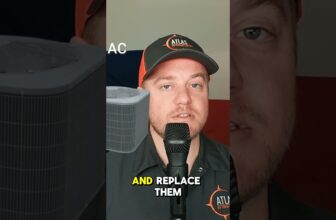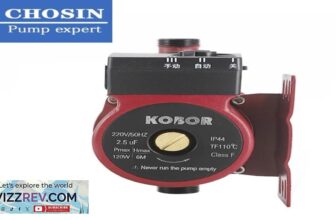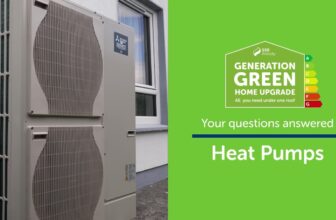Relays On Central Heating Systems – Leeds Plumber
How to Wire Relays onto a Central Heating System and Why you would need Relays
central heating relays my name is alan hart and today this is the video that you've been asking for and it's how to wire relays onto a central heating system and why why you would need relays on a central heating system so on this particular job we've got here this is in my man cave i've got the carer boiler and it's got a low voltage connection but we've got it wired onto an s-plant it's also got underfloor heating and it's got an extra pump on there so i'm going to show you how to wire that and and how relays work as well i've got darren here darren's an electrician and darren's also going to help us with this video so yeah let's uh without further ado let's go and have a look it's important to remember that any electrical works are carried out by a qualified electrician or a competent person and that any works carried out adhere to the current electrical regulations okay thank you ellen so just briefly i'm going to describe what we've got here so we've got a combi boiler and then we've got essentially two zones so we've got a zone valve which is feeding some radiators in an adjacent room and then we've got another zone valve viral pump as well which is feeding underfloor heat into this room um essentially this boiler um requires vault free switching for multi-zones to work on this combi boiler so i'm going to just describe basically what i've done here with the wiring we've got a fuel spur obviously for us twice to let his boiler and all his wiring and i've used a wiring center with some relays which facilitate and enable that vault free switching for the boiler okay alan um so now we're just going to show you a little bit more about this relay and how it works um essentially it's a switch and in this part here it's got like an electromagnetic coil so when you pass current through it it shuts or closes the circuit here i've done a diagram before um we've got the coil which at this moment in time is not energized because the switch is in the open position because this is a normally open relay for this purpose um when the current passes through this coil um it shuts essentially that the switch and closes it so in this case we've got the external controls at the moment i've installed so when the when the 230 volt side of the circuit calls for heat it induces a current through this coil which then closes the switch that then goes out to the boiler and fires the boiler up thank you for that darren and just to try and explain what's going on with that relay what we're trying to do we want we want it to be separate so we've got us feed from the zone valve so if you imagine we've got two zone valves and darren's going to go back over this again shortly we've got two zone valves and one of them zone valves we've got an external pump but if your orange wires if they both went into the wiring center like they normally do then what would happen is when you add either zone would turn the pump on the external pump on but obviously we only want the pump to come on when we want it to come on and it would backfeed so the reason we would use it really um so on this particular one what we're doing we'll get as live the switch slide it comes down the orange wire onto there and then what we want to do then we then want to make it so the boiler works but we don't want that switched live wire to touch the wire that's going back to the boiler so it's separate it's breaking it so with the multimeter i'm just going to show you i've just put into onto the bleep on the multimeter and if i turn the power on so if i turn if i get the switched live so the orange wire if the orange wire is coming back now to this relay just switch that on and we can see that that's bleeping so what's actually happening now just turn that off so what's what's that uh what's actually happening now you've got your switch slide coming from your zone valve it's going through your relay and then back like that but it's making this side now join up this mission darren will go into this in a bit more technical detail than me but if you imagine your link you just your normal link that's in your boiler that you pull out what it's doing in theory obviously we're going through all the zone valves and all that and we're going to show you how to do that show we'll show you how to wire that in full but what that's doing there if you took that link out of your boiler this link there so that makes that makes any sense at all and on this particular one this would be the link here so you'd normally have your link in there joining them two together you'd pull that link out and then you'd wire this this would go to the other side of the relay i'll just pack you pass you back to darren now okay allen yeah we'll try and go into a bit more detail um and hopefully make a bit of sense of this really uh so alan's just shown you um a visual over the pcb in question the connector which is 12 volts essentially you notice the tool cable just a brown and a blue coming in and out of that terminal this is it here i thought i'd just do a very simple drawing this is uh the this is the basically the link that alan's removed because we want to now control this with obviously these relays this is the reason for this video at the moment you can see this is in the open position just like the zone valves above here so what we've got here might sound a little bit complicated but really it isn't so we'll just start off with zone one which is controlling the radiators now remember the zone one um just has a zone valve it's just running off the internal pump in the boiler because it's a combi ball remember so it's nice and easy the orange or what i like to call the fire wire the orange coming from the zone valve goes into the switch live of the 230 volt coil at the bottom of the coil we've got the neutral which goes back to the 10 way box that always stays there permanently and once the orange calls for heat you get 230 volts down this coil book the important thing to remember is on this side when this switch shuts this is 12 volts so we've got two circuits remember 230 volts going through the coil and we've just got the 12 volt switching control which will then go back to the ball to fire it up so that's that's zone one essentially and this bit here is just closing this this switch here between in and out just like putting a link in but we've taken it out remember zone two a little bit more different um because we've got an external pump on zone two so zone two remember is for the underfloor heating for this room and this is the whole reason why we're having to put these relays in because as alan mentioned before you you would get back feed if you put like a normal s plan say with two zones you would normally put all the oranges together which would then fire the pump up irrespective of which zone was calling for heat and clearly we don't want that we want independent control for both these zones so the only difference here with this one is because we've got the external pump for the underfloor heating we've still got the orange fire wire on the uh two part valve again this is for this room but we've got the brown for the pump which goes in the same terminal of the switch live to about to power up this coil which again the same principle closes this switch which then fires the boiler up the critical thing is is when you do get in this case if you get power going down through this 12 volts it only backs feeds to this point because this coil is not energized at this point in this scenario because relay one is not calling for heat so you would not get any back feed um i hope that satellite makes some kind of sense and i've tried to draw it as you know simple as possible really um over to you allen thank you for that darren darren's gonna show us how to wire this next but i just thought i'd explain what we've done so far and how that works so this this nest thermostat here is for the underfloor heating so if i turn the underfloor heating up what will happen now this zone bar will come on orange lights come on on zone valve obviously this relay has energized and then the boiler will come on so if you had that click then and now it's brought the boiler on if i turn this back off obviously that would go off and just wait a minute for that and now that's gone back off now if we turn the other zone on i'll just manually turn it on here i wait till pilot goes off but manually turn it on so we've manually turned the other zone on in there and now this relay will come on again clicked on there and it's brought the zone valve on so the lights come on from this zone valve and boilers come back on again but what would happen if we hadn't done this with relays the orange wires in the wiring center because normally all your oranges are together and then from your oranges would go to what however you why it is usually your boiler and your pump but your oranges would be together and that would backfeed i keep saying about this back feed but what that would do is when we brought the other zone on in there it would bring the under underfloor heating pump on so that's why we have to do this with with the reelers so i hope that makes a little bit of sense for you what i'll do now is i'll pass you back over to to darren and he's going to draw um draw this sort of wiring center out here draw it out on board and try and hopefully help you understand how to wire that as well if you do have any questions please ask them in the comments below obviously i've got the relays here so i can always do a follow-up video if need be i'll just pass you back over to darren now right alan um here goes i drawn another drawing i made earlier um on facebook it looks quite complicated and overwhelmed but really i'm gonna take my time start the beginning just break it all down for you guys and we'll go from there so we'll start off at the fused 3 amp double pole spur or isolator that's where we're going to start from you'll notice in the green is the earth which is really important that should all be taken to everything here every device switch whatever it may be thermistor but i've omitted that for clarity because it would get awfully messy if we uh if we put all the earths in place but if you just take that as given that the earth will go to the boiler the zone valves the thermostats in the floor pumps the relays and zones really important all the airs are connected so back at the fuel spur isolator we've got the main two 30 volt supply the live and the neutral you'll see neutral all been in blue and you'll see that goes to every device on here apart from the 12 volt pcb we don't want anything other than 12 volts um at that at that pcb point there so all the neutrals go back to the 10-way box i haven't got a 10-way box in here because we just don't have a big enough whiteboard but you'll see they're all connected together so that would all go back to the 10-way box um along with the earth's as well same thing with the life to a certain degree now when you see the letter l for live we'll take that as a given that is a permanent live it's on all the time where you see anything that says sl that stands for switch live okay so going back to the permanent live or live as we've got here they would all go back to the 10-way box so that would be your your thermostats it's all your thermostats need a 230 volt supply you need a 230 volts a permanent supply again for your boiler because your pc needs to be all at pcb sorry your boiler always wants to have that permanent feed um and you will also have uh in your zone valves your your grays they'll want to go back to your 10-way box as well they're permanent feeds we'll now go to um the zone valves i think that's probably a good point to start with um a lot of people don't really understand the zone valves and what i actually do but if i can quickly go over the principle of it with you then you'll see how they come into play further on down the line with this explanation so again i've omitted the earth but you'd have five cores so you'd have your gray you'd have brown you'd have orange you're neutral and then find your earth but again in this drawing for clarity we haven't got the earth in place here so your gray would be like i said before just a short while ago would be a permanent live 230 volts your brown is your switch live now this would come from um say a thermostat a timer whatever the situation may be in this case it's a nest smart thermostat and then you've got the orange which i call the firewire which helps me to remember that that conductor that orange fires the boiler up and the pumps and that type of thing and then of course we've got the neutral which goes back to 10-way box as i mentioned earlier the key thing about the zone valves is when you get a 230 volt supply from whatever external device it is in this case a nest thermostat as soon as you get a 230 volt supply that you brown the motor kicks in inside here inside the zone valve the motor operates and basically operates as a switch and connects the brown and the orange together when that happens in this case the orange then goes down to your top of your coils in this case relay one and relay two and they would fire up what we've done here though because we've got separate zone valves these are operated by separate um relays so the relays are taught independent of each other so we've got relay zone one here and relay zone two here so just going a bit back to the other drawing these are just a small version of the bigger ones that was on here on the last drawing that i did for you um so so what would happen then just going back to it so we've got the the lives coming in say for instance we've got the scenario now that um zone one which is the next thermostat for the radiators in the next room that's calling for heat because the temp the ambient temperatures dropped so linking here would link across from the permanent live to the switch live and if we follow this down it would go to zone valve number one and it would hit the brown and it would energize the mechanical motor which would then if we follow it along the orange wire would go down to the top of the 230 volt coil on relay one which would then activate close this circuit here and if we follow it back which is on the red conductor now for 12 volts would go back here and essentially make that loop that link um to fire the boiler up so now we if we have the scenario zone two so that's in here the underfloor heating the ambient temperature drops the nest thermostat calls for heat it wants to it wants to get warm so again the little link comes into play um like a little switch link inside the nest thermostat so we follow the switch live again in this case it does the same thing it's going to the brown but in this in this case zone valve number two for this zone again the mechanical motor operates and sends 230 volts down the orange wire zone valve two and that goes to the switch live which operates the 230 coil on relay number two now going back to the other video with me other simplified drawing of the two relays if you remember the underfloor heating requires an external pump that's the whole reason why we're doing this video with the relays so we need to take the brown of that pump down and wire it into the same terminal as the switch life of the 230 volt top of the coil so that energizes that just like it does in the other relay it closes this circuit and again sends the power round here up and across back to the 12 volt making that link again and again find the boiler up independently so you've got two zones working independently um and that's that's the way that you wire this system thank you very much for that darren i hope you found this video of some use uh another another time when you might need to use relays if you've got a bigger system where you've got multiple pumps on the system that's another time when you might need to use relays and one thing to remember this board here you could fit as many relays in here as you wanted to so that's another option for you as well um as i say i hope you found this video useful please like share comment all that good stuff ring the bell etc etc um that might be uh falling out um yeah thanks for watching
#Relays #Central #Heating #Systems #Leeds #Plumber
source
At 4utoday, we are your ultimate destination for the best deals, offers, coupons, articles, and reviews. Our platform provides a wide range of discounts and promotions on various products and services.
With a dedicated team searching the web, we bring you the most exciting savings. Our informative articles and reliable reviews help you make informed decisions. Join us on our journey to discover incredible savings and make smarter shopping choices.
With a dedicated team searching the web, we bring you the most exciting savings. Our informative articles and reliable reviews help you make informed decisions. Join us on our journey to discover incredible savings and make smarter shopping choices.
Affiliate Disclaimer:
At 4utoday, we may participate in various affiliate marketing programs. This means that we may earn a commission from qualifying purchases made through the links, advertisements, or promotions on our website. The commissions we earn help support the maintenance and operation of our platform, allowing us to continue providing you with the best deals, offers, coupons, articles, and reviews.
Rest assured that this will not affect the price you pay for any products or services you purchase. We strive to provide honest and reliable information, and our recommendations are based on our own research and experience. We appreciate your support and trust in our recommendations.
Rest assured that this will not affect the price you pay for any products or services you purchase. We strive to provide honest and reliable information, and our recommendations are based on our own research and experience. We appreciate your support and trust in our recommendations.











Please send me your plumbing / Boiler videos. WhatsApp 07725 692699 Thanks
Nice one Allan 👍🏼 great explanation.
14:55 *connects the grey & orange together.
Nicely explained video, the amount of sparkys I have asked over the years of how relays work & they always reply saying how long have you got to explain! 👍🏻
Great video mate, thought Darren was clear in his explanations and made it easy to understand. I know many electricians who can not understand CH wiring systems but he clearly knows his stuff.
Was wanting some clarity with when in the wiring schematic, the reference of nest stat….does this mean the actual receiver rather than the stat itself?? and also possible further video on the actual relay itself. How it is sized and rated as I see its a 25A schneider but why that size and also any accessories for it such as the rail and mount, cover etc!?
Many thanks
Very nicely explained.
Very well explained, how come you went with Vokera Evolve, i fitted one recently with besmart controller giving 10 yr quarantee, sort of swayed me.
Thanks for the video but on the relay is the front 230volts and back low voltage and does the 12v have neutral,could you show a close up of relay terminal connections if possible.
Thanks Alan
Well explained, good job.
excellent work
Well done best video on relays and system layout
Hi Allen. Brilliant video. Very clear . Can suggest a housing for the 2 relays/ contactors please
To summarise the situations this would be useful in..
1. Isolation if control voltages are different in your system.
2. You have more than one pump (and want independent control (ie system boiler but also separate pump for UFH circuit as you have here), the main boiler pump would always be under control of the boiler but the zone pumps would be under control of each zone control
3. You need remote control of a high current device, ie immersion heater but switch is on other side of the house, you can then just use wireless/LV control of the relay for that. I think this would also apply say someone wanted immersion heater switch in bathroom, I do not think rules would allow you to have a 240v high current switch in that zone so you would use a LV relay.
Cables should be me mechanically protected ie in conduit etc, cables should never ever run behind pipes unprotected, but very good video.👍👍👍
Hi Allan
Great videos really enjoy them
I have a question for you I am thinking of changing my Glow Warm Ultimata ff120 heat only which is on ‘off switching not modulated on a s plan plus system .
I have evohome working in most rooms , works fine .
As the boiler is now quite old to may be a Viessmann WB1B heat only boiler , can the s plan plus system work on a open therm as this looks to be a better why of running the heating side of things .
I think I can use a OpenTherm Bridge (R8810) to get over the switching ?
very helpful and great explanation. they should teach this at college for apprentices.
That was very helpful guys many thanks
Great videos guys. can you power a thermostat in a cylinder with an RCBO? I
Have you experienced any issues?
Can’t you just connect the Brown switch live on the zone valve to the pump on the under floor heating then you don’t need to worry about back feed?
Very informative video and extremely easy. I love Allen intervention from time to time to take things from high level technical terminology to normal easy to understand level (my level ☺️) thank u allen. I am still waiting reply on the blocked plate heat exchanger video
I have a couple of inverters as backup in the event of mains electricity failure so I can have some lights for the house. I rigged up one to an isolated gas boiler to see if it would continue to function. It powered up the pump but would not fire up the piezoelectric to ignite the gas. Any ideas on how I could make this work?
Excellent video as always allen. Great guy!
Very good. Just wondering if you can use those relays to connect 2 boilers to one system so you can switch between them if needed. Lets say oil and backup electric one. One needing 230V signal and other 0V signal which I assume will be 12V.
Is there a way that you could use the same external pump for 2 underfloor heating zones?
Great video Allen, do you know if the system is wired to a heatmiser uh8-rf, would this avoid the need for relays ie are the built in to the wiring centre? I hand a 3 zone system 2 radiator and 1 underfloor. Cheers Ian
I have an unusual setup with 2 separate plumbing circuits, one does HW and the other the CH. Each has a separate pump. It has been set so i have to have the HW on to use CH as there is no connection to the boiler to request it to ignite. I've figured a way using relays to get around it but how do i get the pumps to stay on for a little while after the boiler switches off to soak heat away from boiler?
Very clear, Darren did a great job of explaining it too. Thanks Alan 👍
Hi hope you are well? What type of Relays are they ? And are they Piggybacked into the low voltage connections on the boiler. Thanks gaz
This video got me out of a pickle today pal 😘
Keep up the good work 👍
What would happen if you send 240v to 12v pcb
Hi Allen, would you be able to show a similar video to this showing how you would wire up a large system with 2 or 3 pumps. I thought your electrician colleague explained thingS really well
Brilliant explanation thanks
Thanks Allen and Darren, just wired an S plan as usual with multiple zones and discovered a back feed is causing me problems. Been trying to use logic to try and work out how to overcome this problem but no joy. Typed my query into Google to see if I can find a solution and hey presto Allen Hart saves me yet again. Cheers Allen for all your great work.
Great video this. I'm on with a bivalent system (heatpump and boiler). The boiler has its own system pump which is fine. I need to know how to turn another system pump on when the ashp is on. Heatpump and boiler run on different dT's and are hydraulically separated via a LLH.
Great video, thanks
Allen could you tell me what Relays these are please. Many thanks
What should I order for the relay please. But I want one that has 240v on both of the circuits. I'm assuming you can still use the ones you are using, as it's only operating as a switch, so if you have 240v in on both circuits you will get 240v out on both circuits too.
I'm right in thinking the really is basically a 2 port valve head? 2 separate circuits, first circuit brown/blue makes and breaks switch, then Grey/orange is the 2nd circuit (but obviously that's all 240v).
I could do with a relay that does the same to split a 3rd zone on low loss header (and essentially make it 3rd and 4th zone off the 3rd low loss header pump). Thanks
Would something like this from screwies do the job? Are relays like this all pretty much the same thing, maybe with different Ampages??
Great video not sure if you are still on YouTube. What type of relay are these and what amp etc
That was really helpful ⭐️
Can u please. Explain how to do pump over run wiring on heat only boilers and how to connect
Wireless connections. By
main link radio switch thanks
And please give some info on air conditioning units. Please
🙏
Does the Sl from stat not engerise the brown on the MV which then turns the motor inside and closes a micro switch between orange and grey (permanent) which energises the fire wire orange ?
Just Darren said the brown energises the switch wire
Thanks for this video on relays. It solved my voltage back feed problem when I added a new UFH system to my existing CH. Now, both systems can independently enable the boiler.
What